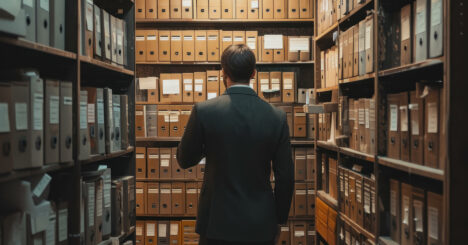We can’t go out to see the latest movie with a group of friends because of social distancing restrictions. How about everyone staying at their own homes and simultaneously streaming the same movie? Then we can all talk about it afterward on Zoom or some other videoconferencing program. After all, our friends are subscribers to the same streaming services as we are, such as Netflix, Hulu, Disney Plus, etc., and at least one major browser has an extension that allows streaming parties, even chatting on the side.
Totally legal, right?
Sorry – not legal without a license.
The Copyright Act of 1976 grants the copyright owner the exclusive right to perform motion pictures publicly, and to authorize others to do the same. 17 U.S.C. 106(4).
Well, if I’m streaming the movie in my home, that’s not a public performance, right?
The definitions section of the Copyright Act, 17 U.S.C. 101, says:
“To perform or display a work “publicly” means . . . to transmit or otherwise communicate a performance or display of the work to . . . the public, by means of any device or process, whether the members of the public capable of receiving the performance or display receive it in the same place or in separate places and at the same time or at different times.”
In American Broadcasting Companies, Inc. v. Aereo, Inc., 573 US 431 (2014), the US Supreme Court called this provision the “Transmit Clause.”
In this case, the issue was whether an internet subscription service, Aereo, Inc., unlawfully performed copyrighted works publicly within the Transmit Clause, because Aereo was streaming over-the-air television broadcasts on the internet to its subscribers’ internet-enabled devices without obtaining any licenses from copyright owners.* The subscriber could then watch the broadcasts on the screen of his or her personal computer, tablet, smartphone, internet-connected television, or other internet-connected devices.
The lower courts decided that Aereo’s service did not perform publicly within the Transmit Clause because Aereo did not transmit “to the public,” but instead, Aereo sent a private transmission to each subscriber, that was available only to that subscriber.
The Supreme Court reversed the lower courts’ decision and decided that Aereo was “publicly” performing the copyrighted works, even though Aereo argued that it was only providing equipment and each of the performances was capable of being received only by one subscriber, so that it transmitted privately, not publicly.
The court analyzed the language in the Transmit Clause underlined above, and said, “Therefore, in light of the purpose and text of the [Transmit] Clause, we conclude that when an entity communicates the same contemporaneously perceptible images and sounds to multiple people, it transmits a performance to them regardless of the number of discrete communications it makes.” The court also said, “In other words, ‘the public’ need not be situated together, spatially or temporally.”
Thus, based on this case, transmitting the same motion picture to multiple people who are situated in multiple different locations would be a “public performance,” even if each person was receiving the motion picture in his or her own home or another private place, at the same time or at different times.
Members of the same household watching the same performance while physically together in the same private home, or inviting neighbors or friends to watch while everyone is physically together in the same private home, is not a public performance because 17 U.S.C. 101 says:
“To perform or display a work “publicly” means— (1) to perform or display it at a place open to the public or at any place where a substantial number of persons outside of a normal circle of a family and its social acquaintances is gathered; . . . ”
But all we’re doing is watching something for which we already have a subscription.
When a copyright license is granted (such as a subscription), actions within the scope of that license are permitted. However, actions outside the scope of that license constitute copyright infringement. S.O.S, Inc. v. Payday, Inc., 886 F.2d 1081, 1087 (9th Cir. 1989) stated “a licensee infringes the owner’s copyright if its use exceeds the scope of its license.” A subscriber to a streaming service is typically granted a license to stream the content only for private non-commercial use at home. As shown above, streaming to multiple people would be a “public performance,” which would be outside the scope of the license for “private” use granted by the subscription agreement, and therefore would constitute copyright infringement.
Bottom Line: Streaming parties are not legal, because they are public performances that are outside the scope of license granted by the subscription agreement.
This article was published as part of the Fall/Winter 2020 issue of ke kumu, Cades Schutte’s client newsletter. Read the full article, which explores some of the laws unique to Hawai‘i.
FOOTNOTES
*Aereo allowed each of its subscribers to connect over the Internet to the subscriber’s own individually dedicated antenna, and select an over-the-air broadcast, where the selected broadcast was then downloaded to a personal folder for that subscriber (and for that subscriber alone) on Aereo’s hard drive. After a few seconds had been downloaded, the subscriber’s personal copy of that broadcast was streamed only to that subscriber over the Internet.





